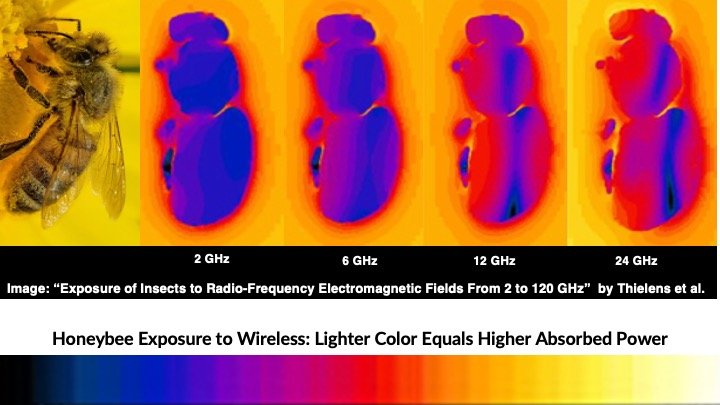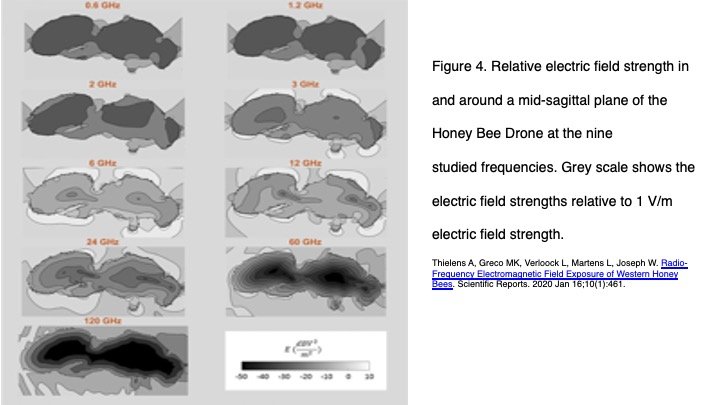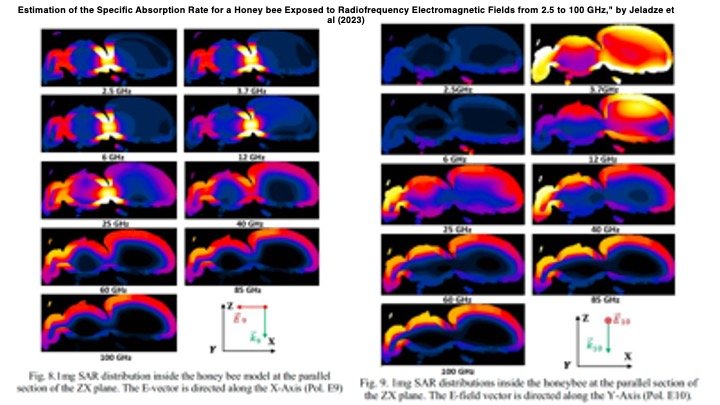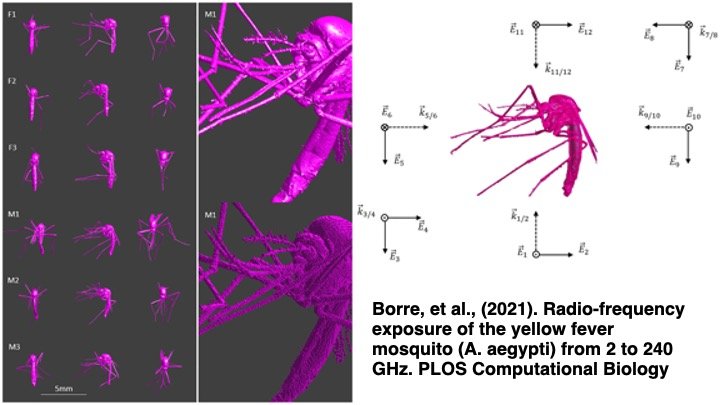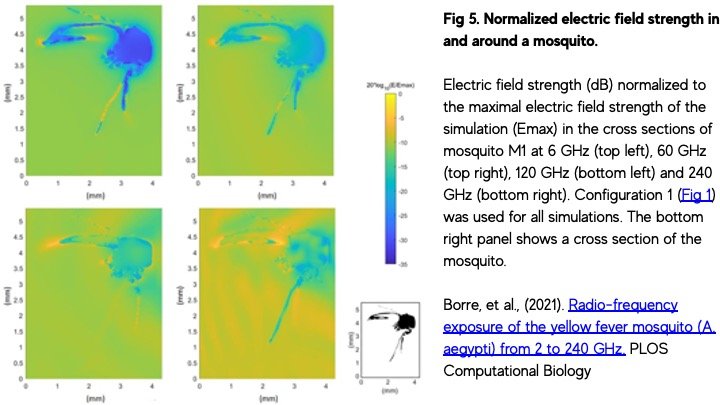Insects are at Risk From 5G and New Networks
A 2023 systematic review on the biological effects of wireless and non ionizing EMF to insects found the vast majority of studies found harmful impacts. The effects occurred at legally allowed exposure levels. Impacts to insects include reduced reproductive capacity, altered behavior, oxidative stress, DNA damage, developmental effects and impaired memory.
5G and new networks will use wireless frequencies already in use, but will also use higher frequencies which have never been used before so widespread in commercial networks.
Scientific modeling of the higher frequency 5G wireless exposure to insects has found that these frequencies uniquely interact with the smaller bodies of insects to result in significantly higher exposures. Such overexposure could lead to over heating and other serious impacts to pollinators.
Here are some of the published scientific studies on the issue.
The study “Exposure of Insects to Radio-Frequency Electromagnetic Fields from 2 to 120 GHz” by Thielens et al 2018 published in Scientific Reports found that for the 4 insects studied (western honeybee, australian stingless bee, beetle, locust), exposure at and above 6 GHz could lead to an increase in absorbed power between 3–370% (a factor if over 3 times.) The researchers concluded that “this could lead to changes in insect behavior, physiology, and morphology over time…”
A follow up study on the honeybee entitled “Radio-Frequency Electromagnetic Field Exposure of Western Honey Bees” published in Scientific Reports by Thielens et al (2020) modeled exposure in various life cycle stages (worker, drone, larva, and queen) and combined the data with in-situ measurements of environmental RF-EMF exposure near beehives in Belgium in order to estimate realistic exposure and absorbed power values.
Again, they found even a relatively small shift of 10% of environmental incident power density from frequencies below 3 GHz to higher frequencies will lead to a relative increase in absorbed power of a factor higher than 3.
Then researchers modeled the exposures of 2.5 to 100 GHz into the honeybee brain and vital organs in “Estimation of the Specific Absorption Rate for a Honey bee Exposed to Radiofrequency Electromagnetic Fields from 2.5 to 100 GHz," by Jeladze et al (2023) and found relatively higher SAR values are observed at 12, 25, and 40 [GHz] frequencies in the 4.8 - 8 W/Kg range, especially for the brain tissue. The SAR values varied depend on exposure parameters such as the direction of the incident plane wave, polarization, frequency, and body peculiarities.
The authors conclude that, “based on the obtained results, we can conclude that the exposure to high-frequency RF-EMFs on honey bees might have an undesired impact, which can cause an attenuation of the vital functions of this important insect.”
Another example of exposure modeling for insects which considered higher frequencies used in of 5G and new networks includes “Radio-frequency exposure of the yellow fever mosquito (A. aegypti) from 2 to 240 GHz” published in PLOS Computational Biology which found that for the given incident RF power, the absorption increases with increasing frequency between 2 and 90 GHz with a maximum between 90 and 240 GHz.
Even at the same incident field strength, the power absorption by the mosquito is 16 times higher at 60 GHz than at 6 GHz. For 120 GHz, this increase is even larger compared to 6 GHz, with a factor 21.8. The absorption was highest in the region where the wavelength matches the size of the mosquito.
The authors conclude that, “In the future, the carrier frequency of telecommunication systems will also be higher than 6 GHz. This will be paired with higher absorption of EMF by yellow fever mosquitoes, which can cause dielectric heating and have an impact on behaviour, development and possibly spread of the insect.”
The article “Electromagnetic radiation as an emerging driver factor for the decline of insects” by Balmori A. (2021) published in Science of the Total Environment states:
“The review carried out in this study shows that electromagnetic radiation should be considered seriously as a complementary driver for the dramatic decline in insects, acting in synergy with agricultural intensification, pesticides, invasive species and climate change. The extent that anthropogenic electromagnetic radiation represents a significant threat to insect pollinators is unresolved and plausible. For these reasons, and taking into account the benefits they provide to nature and humankind, the precautionary principle should be applied before any new deployment (such 5G) is considered.”
Image from “Electromagnetic radiation as an emerging driver factor for the decline of insects” by Balmori A. (2021)
“There is enough evidence to indicate we may be damaging non-human species at ecosystem and biosphere levels across all taxa from rising background levels of anthropogenic non-ionizing electromagnetic fields (EMF) from 0Hz to 300 GHz….Any existing exposure standards are for humans only; wildlife is unprotected…”
“Long-term chronic low-level EMF exposure guidelines, which do not now exist, should be set accordingly for wildlife; mitigation techniques where possible should be developed; full environmental reviews should be conducted prior to the licensing/buildout of major new technologies like 5G; and environmental laws/regulations should be strictly enforced…”
-Levitt BB, Lai HC and Manville AM II (2022) Low-level EMF effects on wildlife and plants: What research tells us about an ecosystem approach. Frontiers in. Public Health

